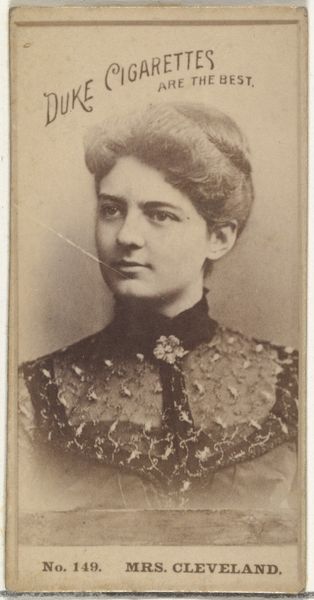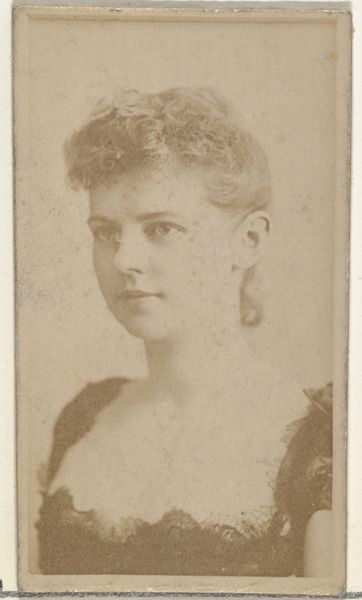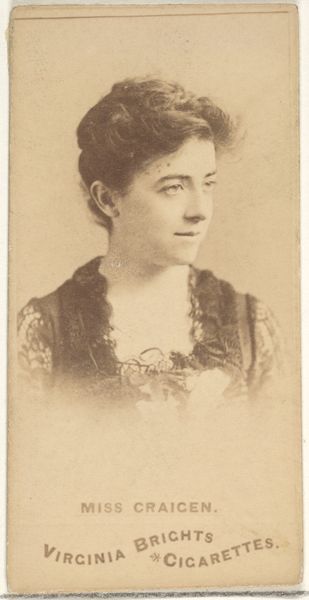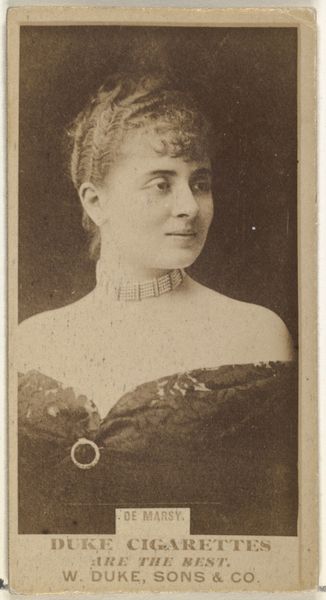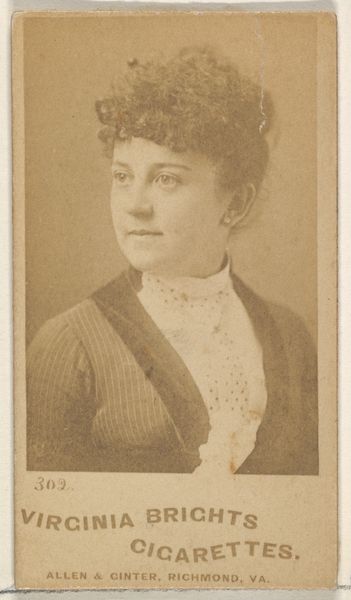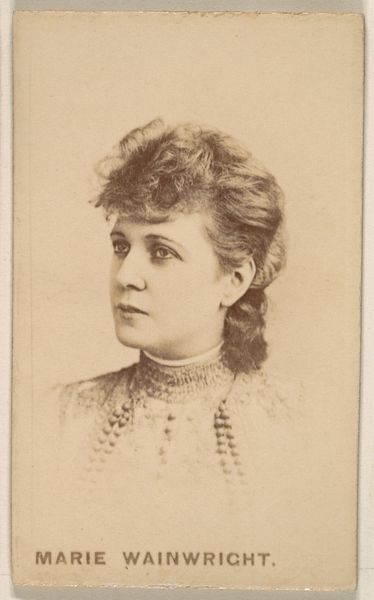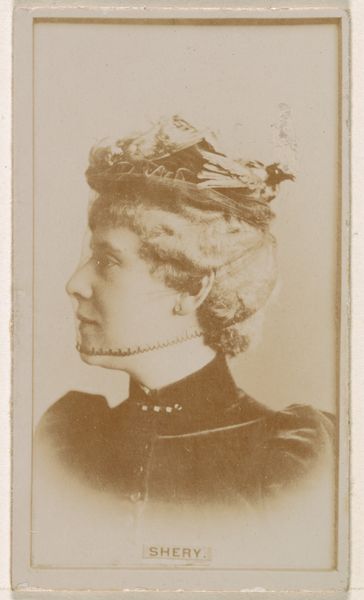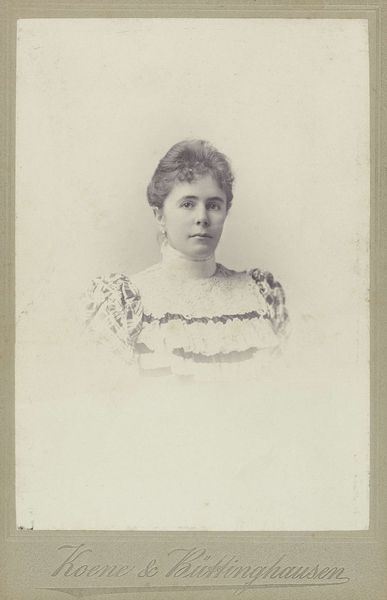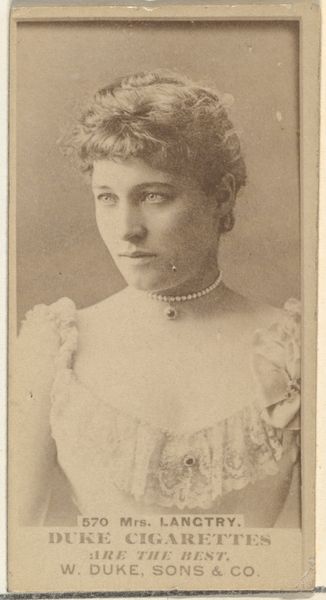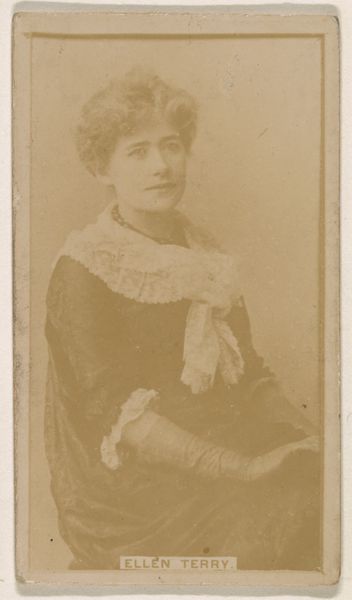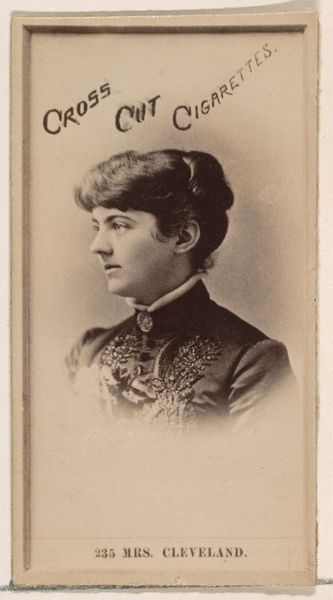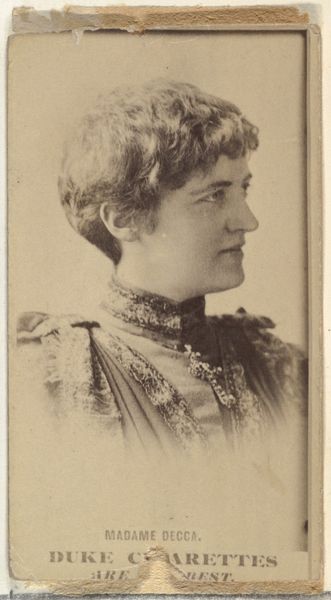
Card Number 86, Mrs. Cleveland, from the Actors and Actresses series (N145-4) issued by Duke Sons & Co. to promote Cameo Cigarettes 1880s
0:00
0:00
drawing, print, photography, collotype
#
portrait
#
drawing
#
still-life-photography
# print
#
photography
#
collotype
#
19th century
Dimensions: Sheet: 2 11/16 × 1 3/8 in. (6.8 × 3.5 cm)
Copyright: Public Domain
Curator: My goodness, she exudes such quiet dignity. There’s a melancholy that draws you in, don't you think? Editor:Indeed. We're looking at "Card Number 86, Mrs. Cleveland," part of the Actors and Actresses series issued by Duke Sons & Co. sometime in the 1880s. These were, believe it or not, cigarette cards used to promote Cameo Cigarettes. The work incorporates collotype and photography, showcasing how these were merged at the time. Curator: Imagine collecting these… the fleetingness of it all. It's more than just advertising, though, isn't it? Mrs. Cleveland is captivating. The way she's gazing slightly off-camera, like she's pondering some unanswerable question. I feel a real human connection. Editor: It’s clever marketing exploiting portraiture’s status and accessibility due to mass production and photography’s democratizing agency. Mrs. Cleveland's attire is equally important: her high-necked, lace-covered dress, clasped with what appears to be a flower, speaks of her time and, most probably, the societal expectations placed upon her. The very graphic elements themselves, the stylized typography announcing "Duke’s Cameo Cigarettes," and the subtle numbering contribute to the piece's semiotic framework. Curator: The formality gives way, just a little. There’s a sense of vulnerability and gentleness… or am I just projecting? Editor: You're not entirely wrong to experience those qualities, however there are social and gender frameworks behind them. Consider, in the late 19th century, representations of women were constrained and heavily laden with symbolism intended to deliver a certain expectation and idea to the viewers. This representation aligns, therefore, with the normative standards of feminine beauty, domesticity, and bourgeois morality. The choice of presenting her alone is interesting within the broader social and economic landscape of those representations of women during the period. Curator: Food for thought! Looking at it now, I see how it reflects its era but also hints at something timeless. Editor: Exactly! Despite being designed as ephemeral ephemera for popular culture, “Card Number 86, Mrs. Cleveland,” offers lasting insight into the culture, artistry, and commercial endeavors of its day.
Comments
No comments
Be the first to comment and join the conversation on the ultimate creative platform.
